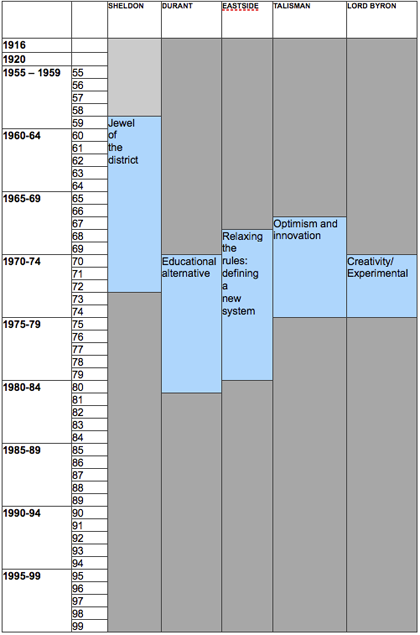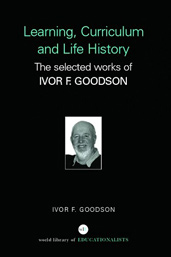Learning, Curriculum and Life Politics: the selected works of Ivor F. Goodson
Long Waves of Educational Reform

From the late 1980s, a new ‘world movement’ focusing on standards-based reform began to spread especially in the vanguard Western countries. The new reforms focused on standardized tests and guidelines. New curricula were centrally prescribed and linked to detailed targets and accountability, and assessment procedures.
Politically, the reforms aimed to satisfy voters’ concerns about educational standards and about public education in general. Politicians and bureaucrats were seen to be acting and responding and, although many of the reforms were hastily implemented and rapidly conceived, they achieved widespread currency.
As we can see in Table 3, by the mid-1990s, these reforms, and the changing patterns of stratification in schools associated with them, had begun to impact on all our case study schools. This new conjuncture of change begins then in the mid-1990s and was in ‘full swing’ as we conducted our research. Hence, any findings about this conjuncture will be by their nature tentative and provisional.
In our United States case study schools, the growing demographic shifts, noted earlier in the article, confirmed a concentration of poverty in the downtown center of Bradford. By 1989, 69 per cent were Afro-American and 18 per cent Hispanic.
The Bradford School district, partly in response to these demographic patterns, began the creation of magnet schools in 1981. Federally magnet schools were created from the middle of the 1980s onwards in order to help sponsor desegregation. Under the market fundamentalism of the governments, beginning with Reagan in 1980 and continued by Bush Senior, Clinton and Bush Junior, magnet schools pursued market competition through promoting ‘school choice’.
One of our case study schools, Barrett, became a Magnet School in 1980. Initially, the result was that the school attracted resources, highly qualified teachers and motivated students, but the effects on Sheldon School were the opposite. High performers left for the magnet school and poverty concentrated more and more, obscenely with 70 per cent of pupils living in poverty as the new millennium dawned. At Durant School, the student clientele also began to change, to be more diverse and to be organized in larger classes, which threatened the ‘alternative’ style of schooling that had been developed.
